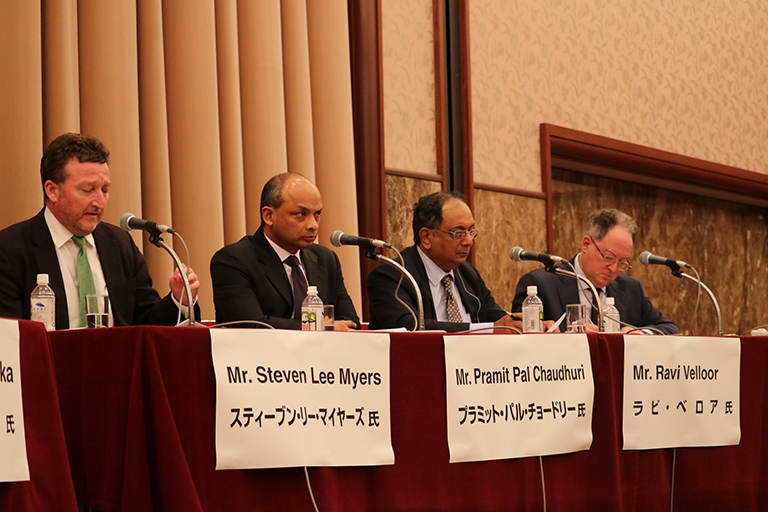The Indo-Pacific Region – The Challenges for the International Community

The goal of having an open and peaceful Indo-Pacific region faces a number of challenges to the international community, according to a panel of experts at a recent symposium in Tokyo.
The conference, “A Free and Open Indo-pacific—Ensuring Peace and Prosperity in the Region,” brought together Japanese experts as well as senior journalists from the U.K., U.S. Asia and India to look at how the issues are perceived in various parts of the world.
“The Indo-Pacific region encompassing the Indian Ocean and the Pacific Ocean is demonstrating tremendous potential as a growth center of the world. Ensuring free and stable maritime order in this region and maintaining the region as free and open is vital to the prosperity of Japan,” said Kiyotaka Akasaka, president of the Foreign Press Center of Japan, the organizers of the event.
“At present this region is facing complicated challenges including Sino-U.S. trade friction, disputes over the South China Sea, growing Chinese influence as exemplified by its Belt and Road Initiative, and more recently a military clash between India and China,” Akasaka said in opening the program.
Giving the keynote address, President of Japan’s National Graduate Institute for Policy Studies Akihiko Tanaka said that China poses a number of challenges to other countries in the region.
“We should not expect China to launch major reforms of its current economic model or democratize any time soon. “Having said that, I think there are many potential projects where China and other countries concerned can cooperate for the purpose of the economic development of the Indo-Pacific region.”
“If you look at the map of this region there are still many countries or areas which are vulnerable in terms of political, environment or security,” he said. “We need to take measures to reduce these risks.”